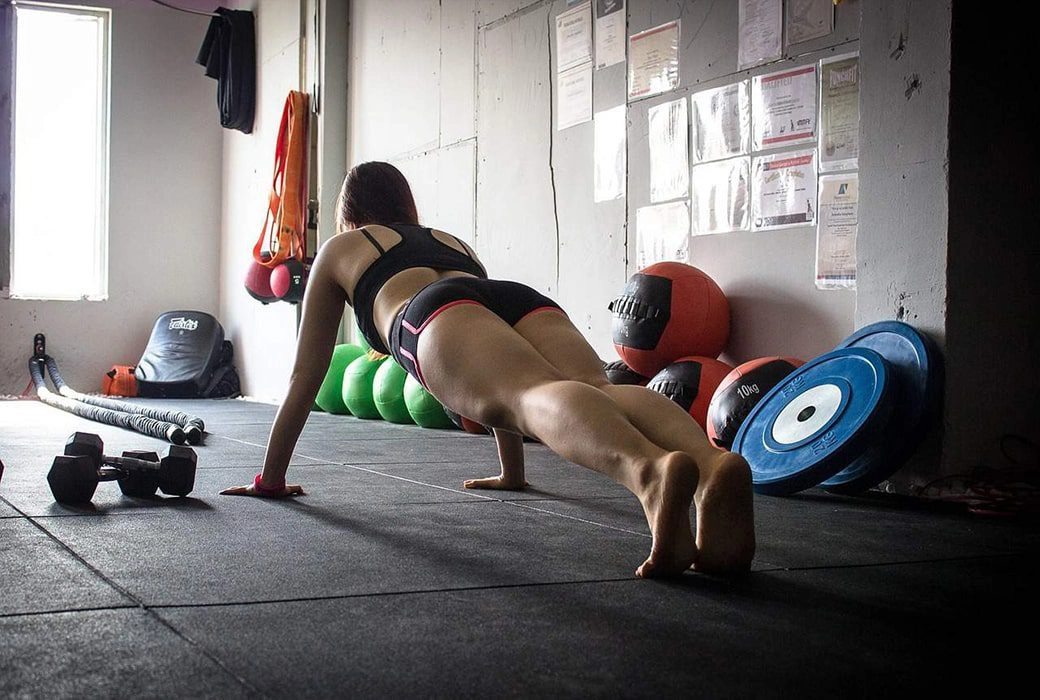Reaching for a drink, walking, and driving are all common activities that will often require the upper and lower back to respond to the call of duty. We often think of our brain as the central location from which our bodies operate. Yet, muscles in the back must move to complete instructions given by the brain. If discomfort is felt in the upper and lower back muscles, this can easily affect daily activities.
Building Strength: Why Is It Necessary?
Strength works like adding men to an army. The more you have, the more you and your crew are able to accomplish – without injury. An immense amount of strength is not required to protect the body from injury. Consistent, steady care is far more valuable to the body over time than great strength.
A balance of strength among parts of the body is important for preventing injury. Focusing too much on one exercise or activity can easily create an imbalance of musculature, leading to injury. Since the back is centrally located in the body, it is important to give it complete and proper care. If you are experiencing sore, achy, and tired muscles, here are some exercises that will get you moving.
Alternating Limb Extensions
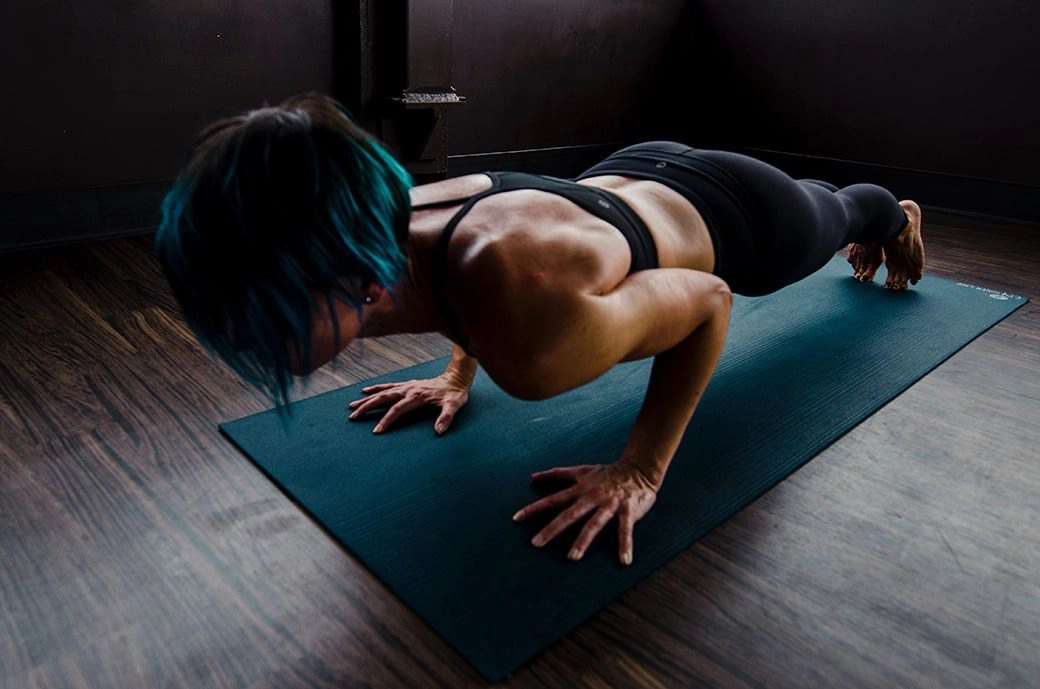
Alternating Limb Extensions work to build strength and coordination in the core areas of the body. Back muscles will be given greater efficiency if the surrounding muscles know how to readily respond to work that is shared by all torso muscles. Upper and lower back muscles must work together for this one.
Begin by placing hands and knees on the floor with your head facing directly between your shoulders and toward the floor. Feet should be directly in line behind the buttocks and resting lightly on the floor. Hips and shoulders should rest squarely above the knees and hands.
Slowly raise the right hand straight ahead with the arm fully lengthened. At time same time, raise the left leg straight behind the body. Try to keep the lengthened limbs as straight as possible. Hold for 10 seconds. Switch sides. Repeat three to eight times as able.
- Modification Option: Complete the arm and leg motions separately.
Plank Hold
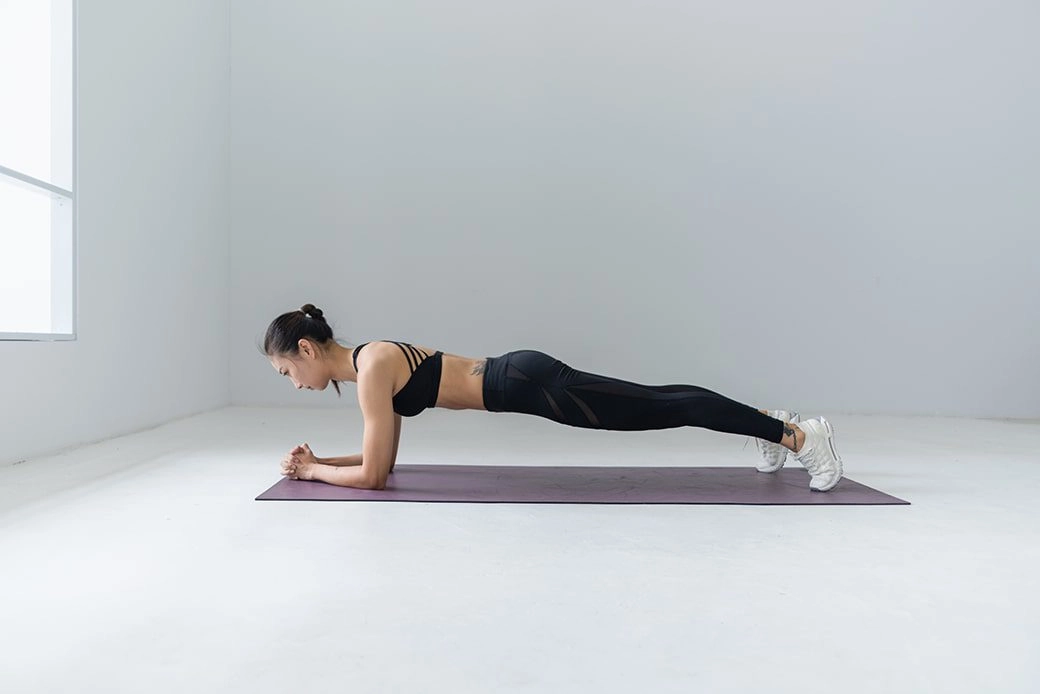
The Plank Hold can help to build back muscles as well as strengthen all four limbs and the front torso area. Plank Holding is a great place to begin if push-ups seem a bit out of reach. It is also good for challenging the push-up veteran. Simply try for longer and more quantitative repetitions if desired. Plank Holding can be done on the elbows, palms of the hands, or with fisted hands.
Place hands and feet directly on the floor as if to do a push–up. Toes should be on the floor with heels facing away from the body. Keep your abdominals tight and buttocks lifted to avoid strain in the lower back. Face straight down. Hold for a count of 10. Repeat three times.
For those experiencing backaches, keeping the hips level with the shoulders may be challenging enough for some time. With some practice, the key is to keep your shoulders, hips, and ankles in a line as parallel to the floor as reasonably possible. Once this is done with ease, increase the length of time until 30 seconds is attainable. Then challenge yourself to try more than three repetitions.
- Modification Option: It is also an option to begin with the body resting on the floor stomach down. If this is desired, raise the body into the start position from the floor instead of going directly to the start position.
Alternating Side Planks
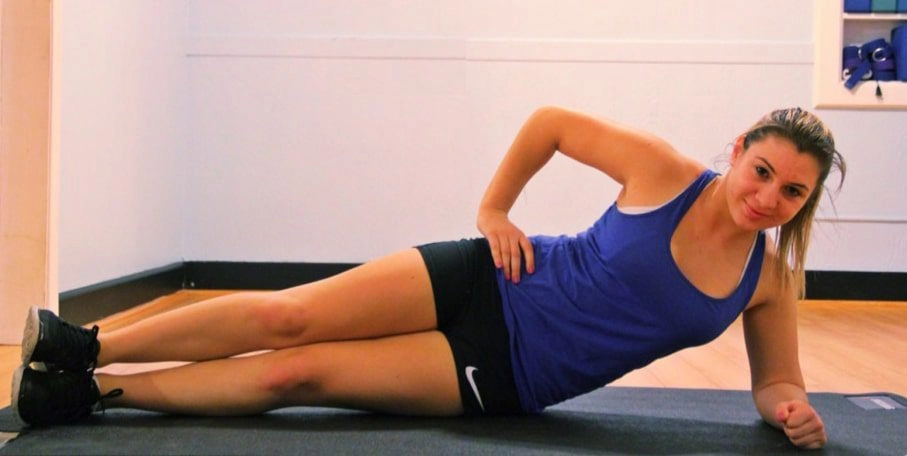
Working the full range of side and back muscles gives greater strength to the body as a whole unit. Alternating Side Planks offer added strength to the lower back and oblique muscles. The bonus with this exercise is that it also works abdominal muscles that support the lower back. Balance practice is also gained with this exercise.
Resting on the right side of your lengthened body, place your right elbow directly under your shoulder with your hand pointing away from your body. A triangle shape should form between your armpit area and the floor. Feet can be stacked one on top of another. Keep legs straight.
Raise your hips as high as possible. Your left hand may rest along your left side or be raised straight into the air. Hold for 10 seconds. Switch sides.
- Modification Option: Place your left (top) foot and left hand on the floor in front of your body for better balance. Remain with your body perpendicular to the floor.
- Modification Option: Place your right hand flat on the floor instead of your right elbow.
- Modification Option: Some individuals may prefer to attain the start position by rolling from the raised forward plank position. If so, do this cautiously. The hips can drop during the transition causing strain on the lower back muscles.
Hip Raises (Torso Bridges)
Hip Raises work to unite lower back muscles with the lower portion of the body. Training the body to work as a cooperative unit is key for easing aches that may be the result of an imbalance of musculature in the body. This gentle exercise welcomes all levels of expertise.
Rest your body flat on the floor facing upward. Place your hands flat by your sides. Pull your feet toward your buttocks keeping them flat on the floor. Knees should be about shoulder-width apart from one another. Look straight upward.
Raise your hips as high as possible while pressing straight down with your hands. Your body should create a triangle shape with both knees as the highest point. Hold for 10 seconds. Complete five to eight repetitions.
Cross Body Standing Arm Raises
Stand with your feet shoulder-width apart. If no severe injuries are present, begin with a single one pound weight held together by both hands. Bring the weight to rest near the left hip bone.
Gently raise the weight across your body to arrive just above your right side with arms lengthened. Hold for 10 seconds. Repeat three to eight times. Switch sides.
Ensure that shoulders and hips stay square and that only the arms move. Do not twist the spine on this one. Stay facing forward during this exercise.
- Modification Option: Sit comfortably and upright in a chair instead of standing.
- Modification Option: Complete the exercise with empty hands placed with palms flat and together.
The Added Benefit of Aerobic Activity

Aerobic activity helps regulate blood flow in the body, thus helping to reduce muscle soreness. A few gentle and aerobic activities that may be desirable include:
- a brisk walk with others or in solitude
- a snowshoe adventure (without heavily packed gear)
- stair climbing
- swimming
- a favorite activity that keeps blood moving throughout the body
Choose an even pace for any activity that you choose while healing. Jerks and stops can be hard on joints and discs. If aches and pains already exist, other areas of the body may try to make compensation, causing further injury. Save intense activities for when pain has subsided.
Interest is a primary ingredient for successfully staying active and minimizing pain for the long-term. Focus on what may often be missed when pushing through hardcore workouts. Take the time to appreciate what is seen around you (even if it is a screen attached to an exercise machine). Find something that you enjoy. Rest has its place in the process of healing, but so does a consistent habit of aerobic activity.
A Few Exercises to Avoid with an Achy Back
- Standing Toe Touches. It is easy to overstretch muscles in the back when attempting to fold the body in half at the middle. Consider one of the above exercises instead of this stretch.
- Sit Ups. Partial crunches may be appropriate instead.
- Double Leg Lifts. This may be too much stress for an aching back to manage safely. Consider one leg at a time and move from there as strength is gained over time.
Considerations for Achy Back Muscles
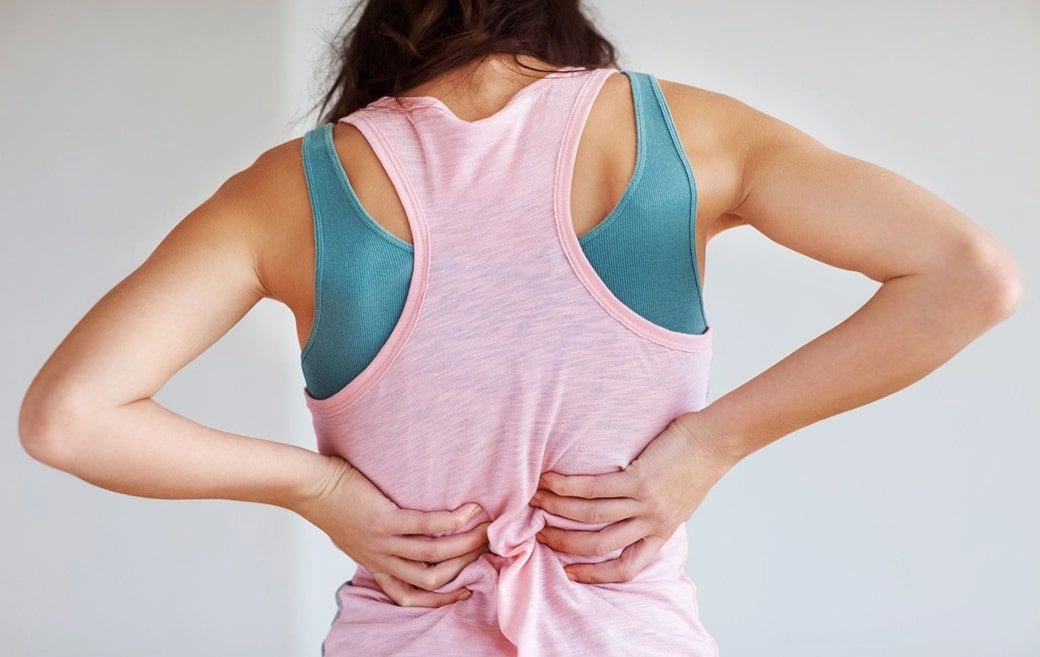
Avoid overreaching or overstretching with any exercise. Allow yourself to push your body without causing injury. Strength building exercises are also great for preventing injury and avoiding re-injury after healing has occurred.
Achy or painful back muscles may be the sign of an injury or condition that requires medical attention. If pain persists, one of the following may be to blame:
- pinched nerves
- misaligned discs
- herniations
- arthritic conditions causing inflammation
- or strained muscles
- pregnancy
Better Health Chiropractic and Physical Rehab welcomes Alaskans to come and receive care for aching back muscles. This may be for a new condition that needs to be explained or a long existing problem that you are looking to ditch. It is important to consider the cause and type of back pain for real healing to be considered.



